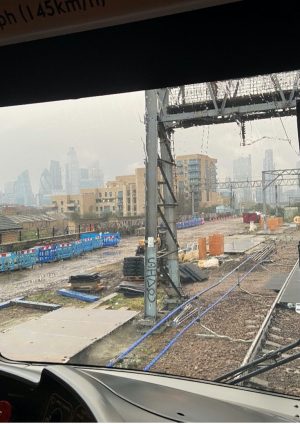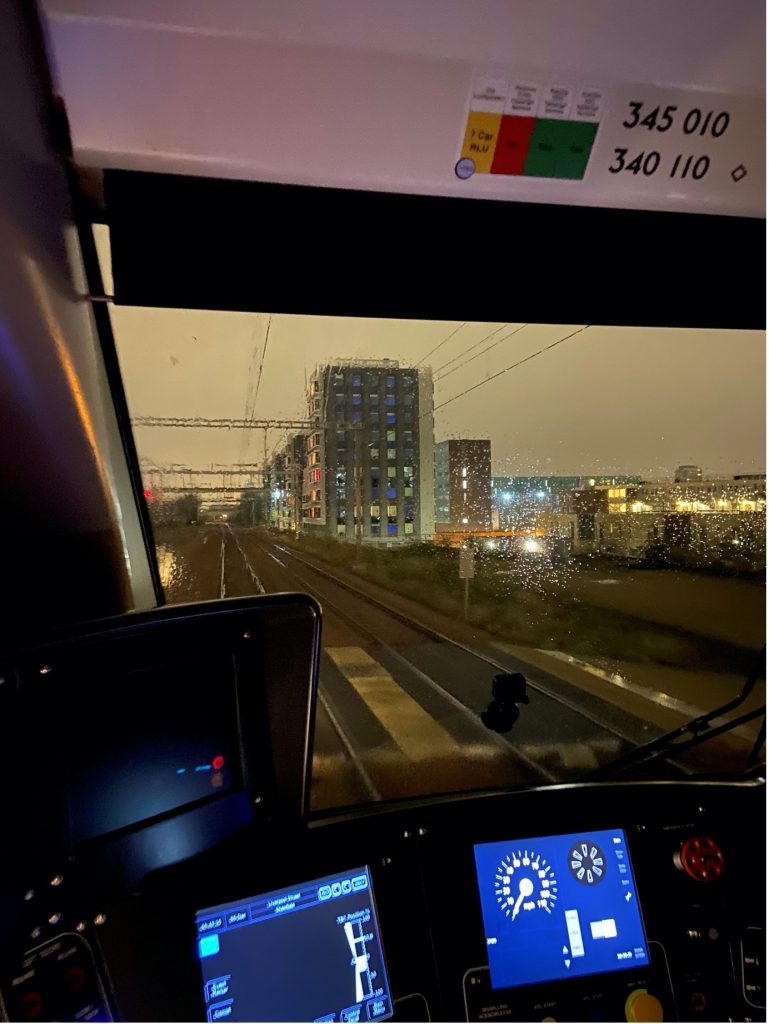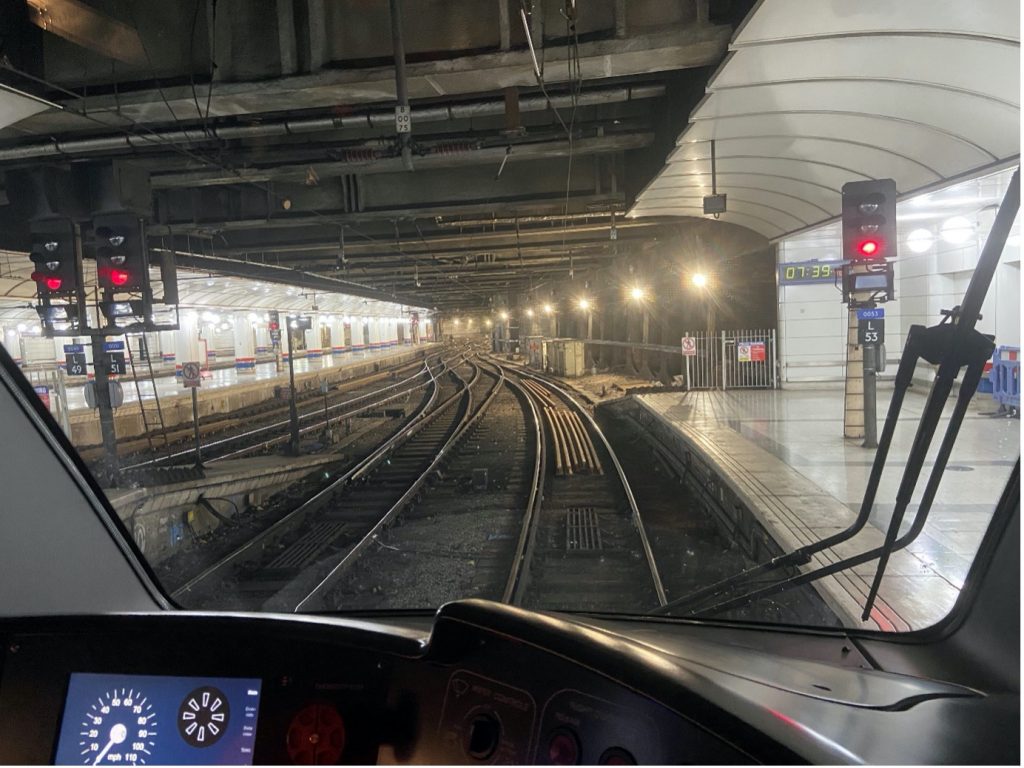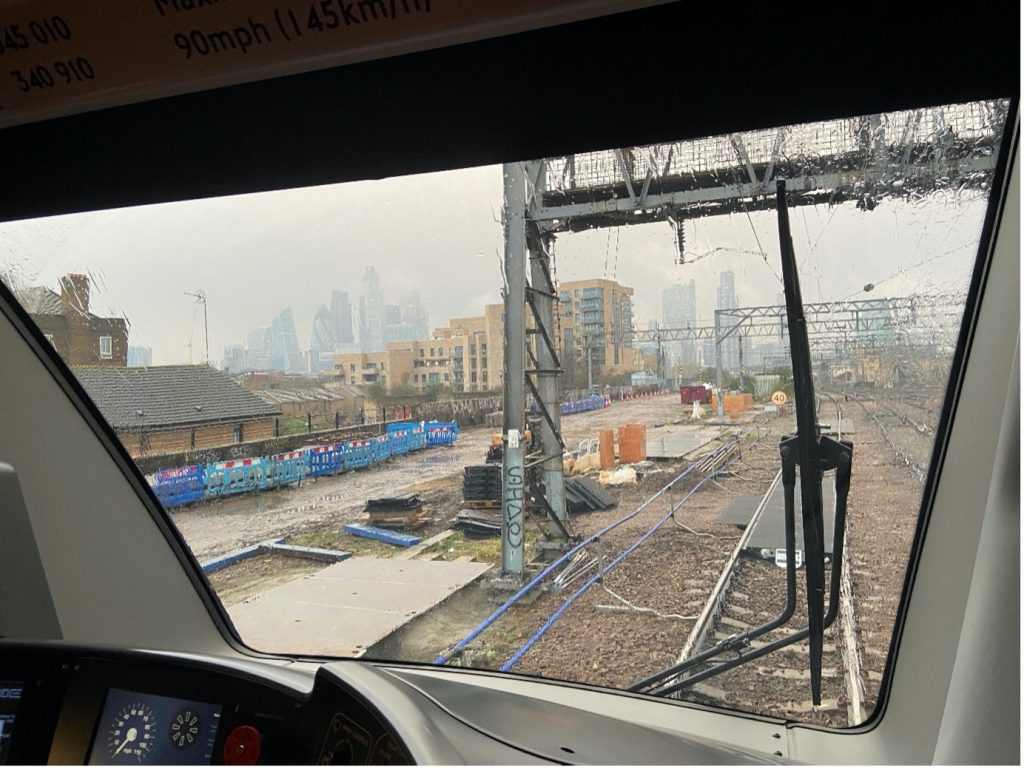
Whiteboard Train – Liverpool Street Platform Extensions
Document
type: Micro-report
Author:
Jon Bradley
Publication
Date: 20/04/2021
-
Abstract
The Whiteboard Train was a collaborative and industry leading exercise to allow project engineers unhindered access to assess infrastructure and the line of the route ahead of the platform extensions project taking place at Liverpool Street station. This joint initiative, between MTR Elizabeth line and BCM Construction, involved the support and cooperation of multiple stakeholders to ensure its smooth running given the pressures of operating a high frequency passenger service on the Great Eastern route.
-
Read the full document
Introduction and Industry Context
The key project deliverable for the Liverpool Street platform extension project was to complete the platform extensions and associated works by 31 May 2021, to ensure new rolling stock could be fully introduced and operated at Liverpool Street station for future Elizabeth line services.
Although MTR Elizabeth line has operated services on the Great Eastern route since May 2015, these have been formed of legacy 8-car Class 315s, or 7-car Class 345s, otherwise known as ‘Reduced Length Units’ (RLUs). The introduction of ‘Full Length Units’ of the 345s, which are 205m in length and would not clear into platforms 16, 17 and 18 on the east side of the station, meant that platforms 16 and 17 needed to be extended to accommodate the new trains – removing platform 18 altogether from operation.
Main Story
‘Whiteboard’ exercises have previously been undertaken by engineering projects to better visualise and understand the work site and associated access points, safe zones, and main locations of critical activity. The platform extension project was unique in that it was simple to examine the area within the station from public areas of the platforms, but the associated route towards Stratford was much more complex and required focus from an engineering perspective.
Whilst it was possible for engineers to undertake a possession of lines, to walk through the track layout, and to access points at Bethnal Green and Mile End, it would be beneficial to obtain an on-board point of view. This would grant unique access to view Permanent Way, Signalling, and Overhead Line Equipment (OHLE), from a driver’s perspective in the driving cab of a Class 345 unit.
Figure 1 – Single Line Diagram of Liverpool Street to Stratford showing location of Access Points
Once agreed in principle, significant planning was undertaken to co-ordinate between the operator and project, whilst also considering the booked passenger services of other operators. As the project required several trips between Liverpool Street and Stratford, stopping at various access points and junctions en route, it was not possible to path this special train between existing passenger services. As a result, the Train Operating Companies took a proposal to Network Rail and it was agreed a special service could operate early on a Sunday morning, when passenger services ran at a lower frequency. This solution involved diverting some services to alternative lines between Ilford and Liverpool Street, which required further planning.
Once all Train Planning activities had been completed, the Operations Delivery team took over principle responsibility to ensure all subsequent arrangements were in place to operate the ‘Whiteboard Train’. The first step was to identify a unit available which could be taken from the pool of Class 345 RLUs based out of Ilford Depot. In conjunction with the Fleet Delivery team and rolling stock provider Bombardier, a suitable available unit was identified and re-located to Ilford Depot for collection on the morning of the exercise.
The MTR Elizabeth line Control team was responsible for creating the necessary VSTP (Very Short Term Plan) paths for the ‘Whiteboard Train’ in conjunction with Network Rail. As it was not known how many trips between Liverpool Street and Stratford would be required, it was decided the schedules would be created on the day, as opposed to in advance. This gave a degree of flexibility and ensured there was no unnecessary delay on the day.
Two drivers were selected from the MTR Elizabeth line Operations Delivery team for the ‘Whiteboard Train’. They were joined by the Operations Delivery Manager for the East, who acted as a single point of contact on the day. The unit was collected from Ilford Depot and departed as 5V00 at 05:50, running empty to Liverpool Street station, where platform 18 was made available. The project engineers from BCM Construction had received a safety briefing on the morning and joined the Class 345. For the team, there was also the added challenge of adhering to essential COVID-19 restrictions, including social distancing and wearing of face coverings on-board.
The first run from Liverpool Street departed as 5V01 at 06:30 and stopped at Bethnal Green Road Rail Access Point (RRAP) and Mile End RRAP on the Down Electric line. The Project Manager accompanied the driver within the cab, who was able to provide a running commentary by utilising the on-board Public Announcement system. As the line had been kept clear of passenger services for the exclusive use of the ‘Whiteboard Train’, various stops could be undertaken without impeding other traffic.
Figure 2 – Mile End Road Access Point
Once at Stratford, a reversal took place with the run back to Liverpool Street taking in the Up Electric line. The project engineers wished to make further stops at the RRAPs, as well as within the throat area of Liverpool Street station. This afforded a unique view of the track layout from on-board the unit, which otherwise would have been challenging to facilitate and involved disruptive possessions.
Figure 3 – Liverpool Street platform 18 and throat
Due to daylight breaking, a further run to Stratford and back was undertaken (running as 5V03/5V04), to allow better visibility of some key assets and access points. With the line clear until 09:00 it would have been possible to make further trips, but only two return journeys were required.
Figure 4 – Bethnal Green Road Access Point
A debrief was held with the project engineers upon arrival at Liverpool Street to ensure all were satisfied with the morning’s activity and this was fed back into the planning for the blockade scheduled for over the Christmas period.
The unit was returned to Ilford Depot after completion with no impact to any passenger services throughout the morning. The exercise was deemed a success and highlighted the excellent collaboration between MTR Elizabeth line and BCM Construction, the principal contractor for the project.
Lessons Learned
The ‘Whiteboard Train’ was well received, but in future more time should be allowed for the organisation in the days leading up to the exercise. Although the scope of the project was successfully achieved, some arrangements were only finalised hours before, which placed added pressure on individuals, and Network Rail, to ensure all activities were complete to allow the special to go-ahead.
It is vitally important to engage and communicate with internal and external stakeholders at the earliest stage possible to make sure the planning processes are followed correctly and within timescales, whilst also ensuring those operating the railway on the day remain fully informed.
Recommendations for Future Projects
The ‘Whiteboard Train’ gave engineers a unique opportunity to view the railway from an on-board perspective. Historically, these exercises have been undertaken at track level, but by being located on-board engineers could see what the customer sees when travelling, something that is on occasion overlooked by maintenance and operations teams working on the ground. There is also a safety advantage in reducing the need to work at track level.
Re-planning the train service to allow unhindered access to the Up and Down Electric lines allowed stops to be undertaken and there was no risk to passenger services.
One small team co-ordinated the entire ‘Whiteboard Train’ from the idea through to concept and delivery, which proved beneficial in terms of liaison across the project/internal teams and industry stakeholders.Finally, engaging with stakeholders is critical, particularly at a Train Planning and Operational level. A briefing pack for stakeholders was produced, which contributed to the smooth running of the exercise.
-
Authors
Jon Bradley - MTR Elizabeth line
Jon Bradley is an Operations Delivery Manager for MTR Elizabeth line, covering the route between Liverpool Street and Shenfield. Previously at c2c, Jon started his railway career in 2012 as a Customer Service Executive, before moving into a performance-based role. He joined London Overground Rail Operations Limited in 2015 and was the performance lead for the introduction of West Anglia services. Joining MTR Elizabeth line in 2017 as Strategic Performance Manager, Jon transferred to Operations in 2020. In his spare time, Jon enjoys cycling, travelling, and has a passion for the rail industry, both at a commercial and private level.




